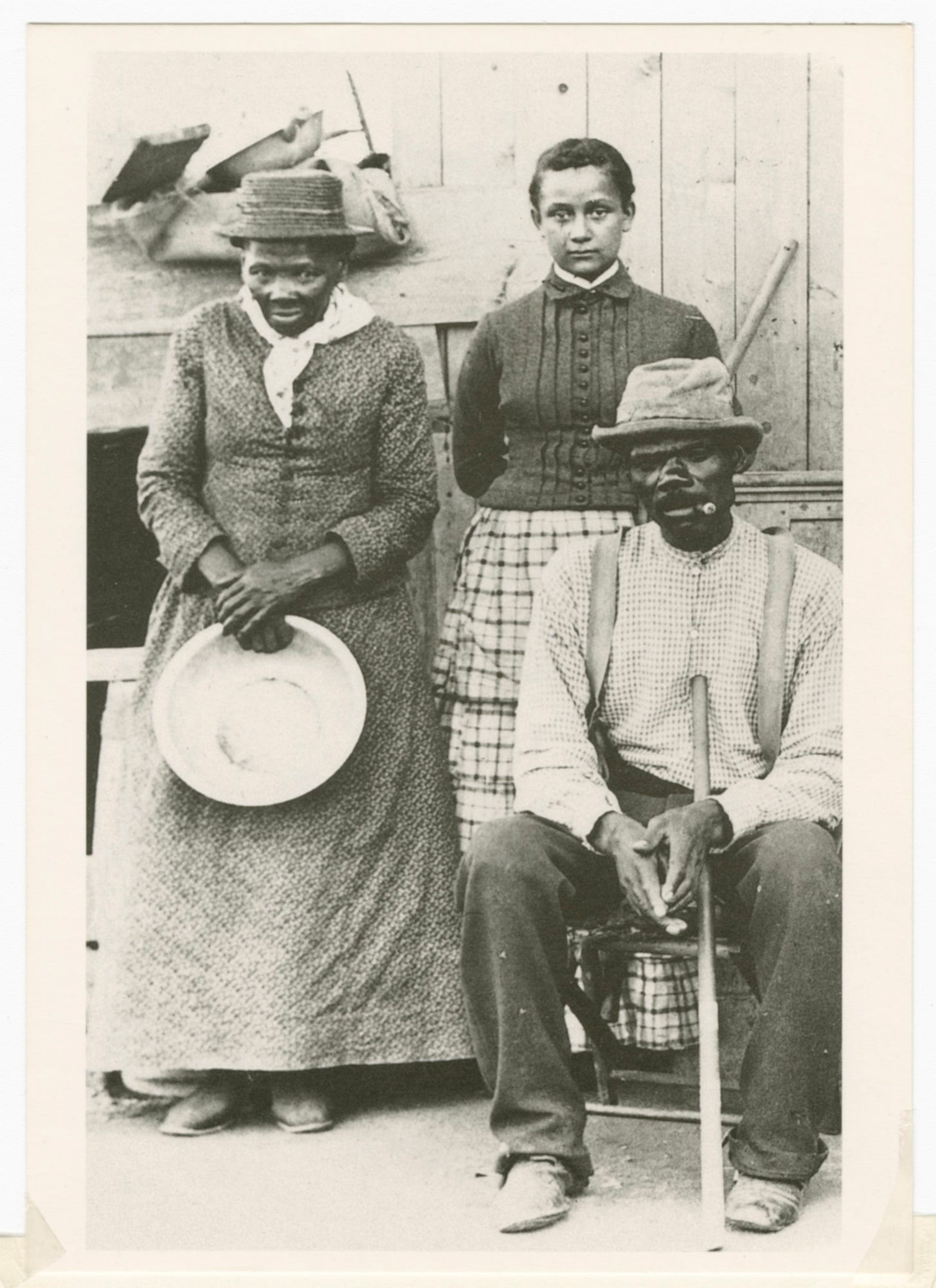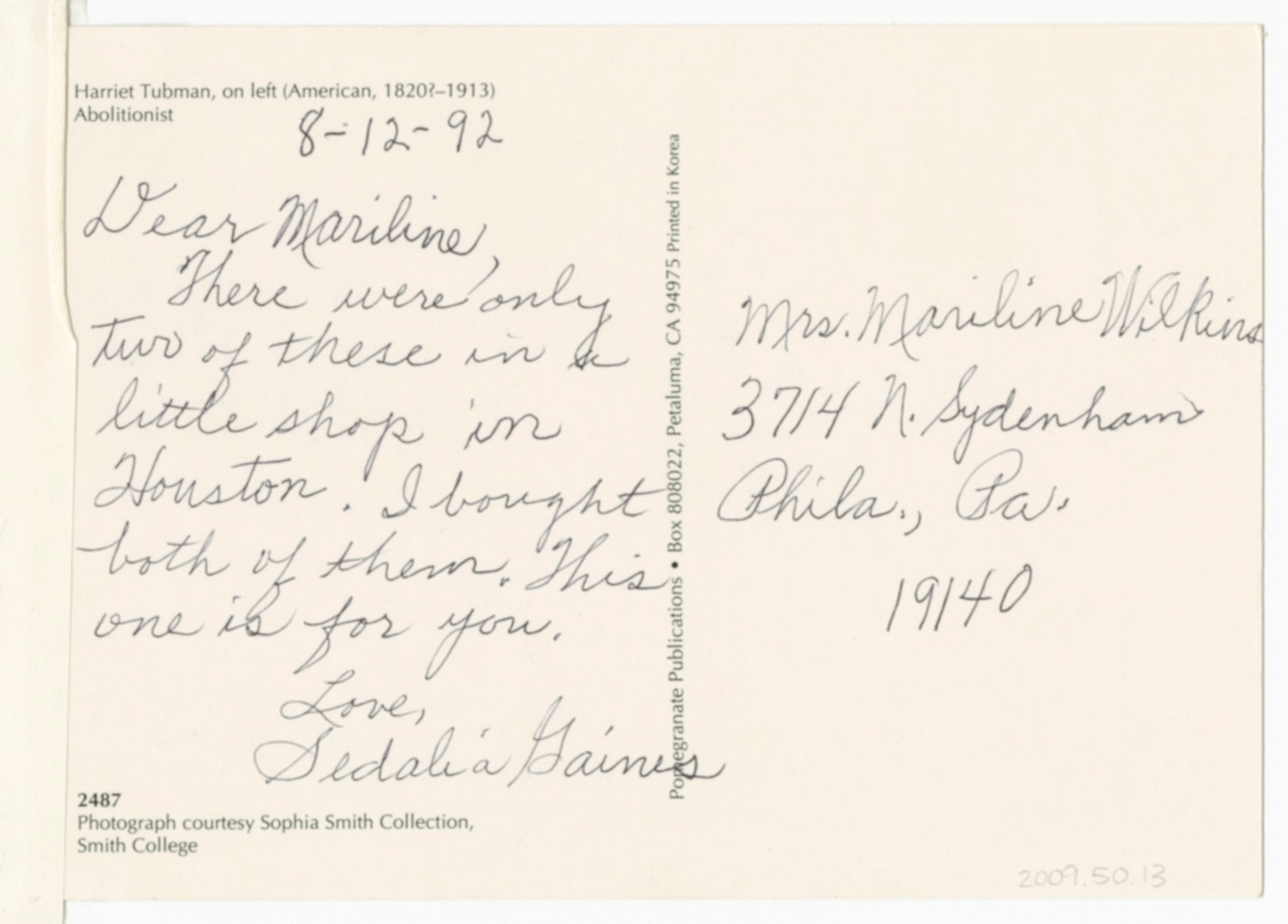📸: “Postcard of Harriet Tubman, Nelson Davis, and daughter Gertie,” ca. approx. 1887 & printed in 1992, photographed by William Haight Cheney, sourced from the National Museum of African American History and Culture.
Mirror Moment(s): Generational Freedom
Yet again, I’m sharing another controversial source asking the question is Maryland the South? I don’t have any answers for you, but I know I can’t think of the South without thinking of Harriet Tubman (who was originally from Maryland & settled in Auburn, New York).
So often, we only look at the highlight reels of our great changemakers. This almost always means looking at the remarkable things they accomplished in their youth. This postcard is so intriguing to me, & deserving of being in D.O.T.S. because it captures Harriet in her later years. Here, we can see Harriet after all of the great missions to free people & leading a historic military raid in the Deep South.

Life continues long after society deems you are no longer useful. We always have inherent value simply because of the fact that we are humans. Harriet had value because she was human, despite what the law claimed. Therefore, as a human, she naturally got older.
In this photograph, taken by William Haight Cheney, Harriet’s upper body is bent forward. Her shoulders & head are rounded but she keeps a firm upward gaze. At this point, Harriet would have been approximately 65 years old in this photograph. I enjoy seeing the curve of life in her shoulders, just as much as I enjoyed seeing her straightened shoulders in younger photos.
I’m also drawn to how Harriet & her second husband’s, brick mason Nelson Davis, hands almost mimic each other. Harriet’s hands are more clasped (potentially because she is holding a pan). While Nelson’s hands have more breathing room between them. According to the Tubman 200 Timeline in Ms. Magazine, “in either 1866 or 1867, Tubman meets Civil War veteran Nelson Davis (ca. 1844-1888), who is twenty-two years her junior and a boarder in her home.”
Their first encounter occurs 15 or 16 years after “Tubamn returns to Maryland for her husband John Tubman, only to discover that he has moved on with another woman, which leaves her devastated.” Yes, you read this last sentence correctly. Harriet risked her life to return to take John with her further north (he was already free) so they could be together & he had moved on with someone else. Unfortunately for John Tubman, his choice to move on romantically & stay in Maryland cost him his future.
In 1869 “on March 18, Tubman marries Nelson Davis in Auburn.” The Ms. Magazine Timeline provides context to the archival image above. Despite being devastated that the man she loved moved on we can see how Harriet heals & remains open to love. This postcard also gives us some insight into kinship during slavery & post-emancipation. Harriet & Nelson’s love & family continued to expand in 1874.
Gertie, born post-emancipation, is the embodiment of the mirror moment generational freedom. In this 1888 photograph, Gertie’s hands are behind her back & therefore unseen to the viewer. I like to imagine that Gertie’s hands are a combination of clasping (Harriet) to your history & remaining open (Nelson) to a new way of being. Gertie’s hands serve as a merging of her two parents’ hands to make the symbol of generational freedom.
From the time Gertie is adopted, we can also get a glimpse into how Harriet provided for her family & also claimed beauty for sustenance. They grew farm products and sold bricks, but Harriet also had “an impressive apple orchard.” It’s unclear if Harriet also sold apples to support herself but I love envisioning her in a citrine orchard: walking, eating ripe apples, sitting, relaxing leisurely with Nelson, or by herself. To quote, activist & writer Lorraine Hansberry “we can impose beauty on our future.”
Harriet, who was believed to have been prohibited from eating the apples she forcibly picked when labeled property, imposed the beauty of the apple orchard on her bountiful land. Harriet was surrounded by family, people she had taken in, nature, & found romantic love again in Nelson.
Unfortunately, this photo is most likely one of the last photos taken of Nelson. In 1888 “on October 14, Tubman becomes a widow after Davis, who was often sickly, dies of Tuberculosis.” Therefore, because this photo was taken in 1887, this photograph captures Nelson in the last year of his time earthside.
In conclusion, this postcard captures significant moments in all of the subject’s lives. Furthermore, the postcard functions as an archival material twice over. The first archival material is the 1887 photograph & the second one is the written message to “Mariline Wilkins in Philadelphia, PA from Sedalia Gaines in 1992.”Gertie was Harriet’s symbol of generational freedom, and Harriet is many of ours. This is evident in the fact that Mariline saw there were only two Harriet Tubman postcards left & got both of them. One postcard to serve as a reminder for herself, & one to pass on to someone else 🤎.
P.S. If you enjoyed reading about this archival letter/message then I highly recommend reading the book “I Can't Wait to Call You My Wife": African American Letters of Love and Family in the Civil War Era by Rita Roberts. This archival book beautifully explores the familial, romantic, & platonic love of Black Folk during the Civil War through letters 💛.
This exploration is a rare free in-depth excavation of an archival material. These in-depth meditations are typically behind a paywall & only made available to paid subscribers. If you enjoyed the exploration above, please consider becoming or upgrading to a paid subscriber.
Paid subscribers have access to additional textual resources, interviews with Southerners working in varying fields, and podcast/audio readings of captions, pieces of art, videos, book recommendations, and more that relate to a specific archival post.
Thank you for being here & please share this publication with a friend you think may enjoy learning more about the Dirty South!







